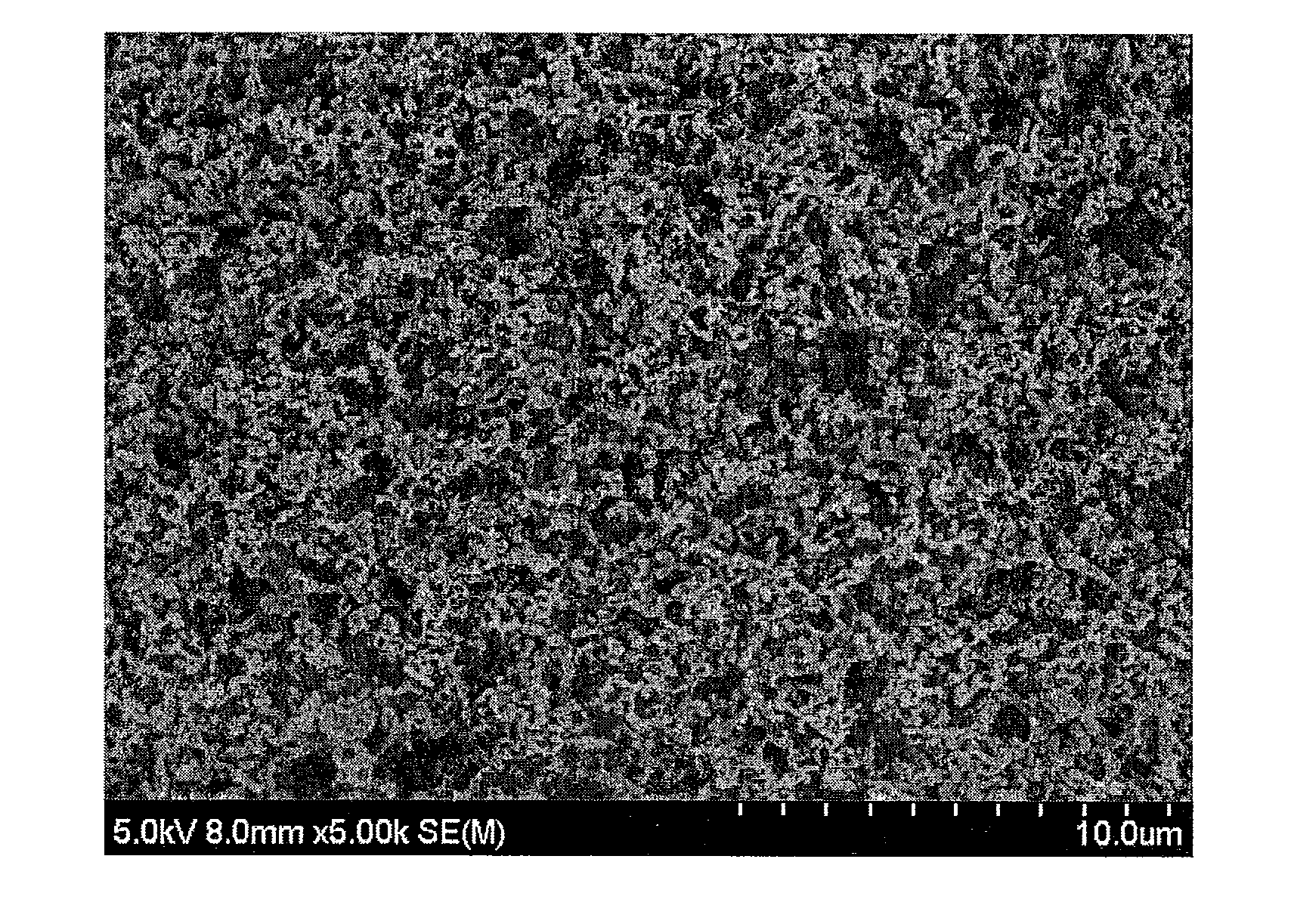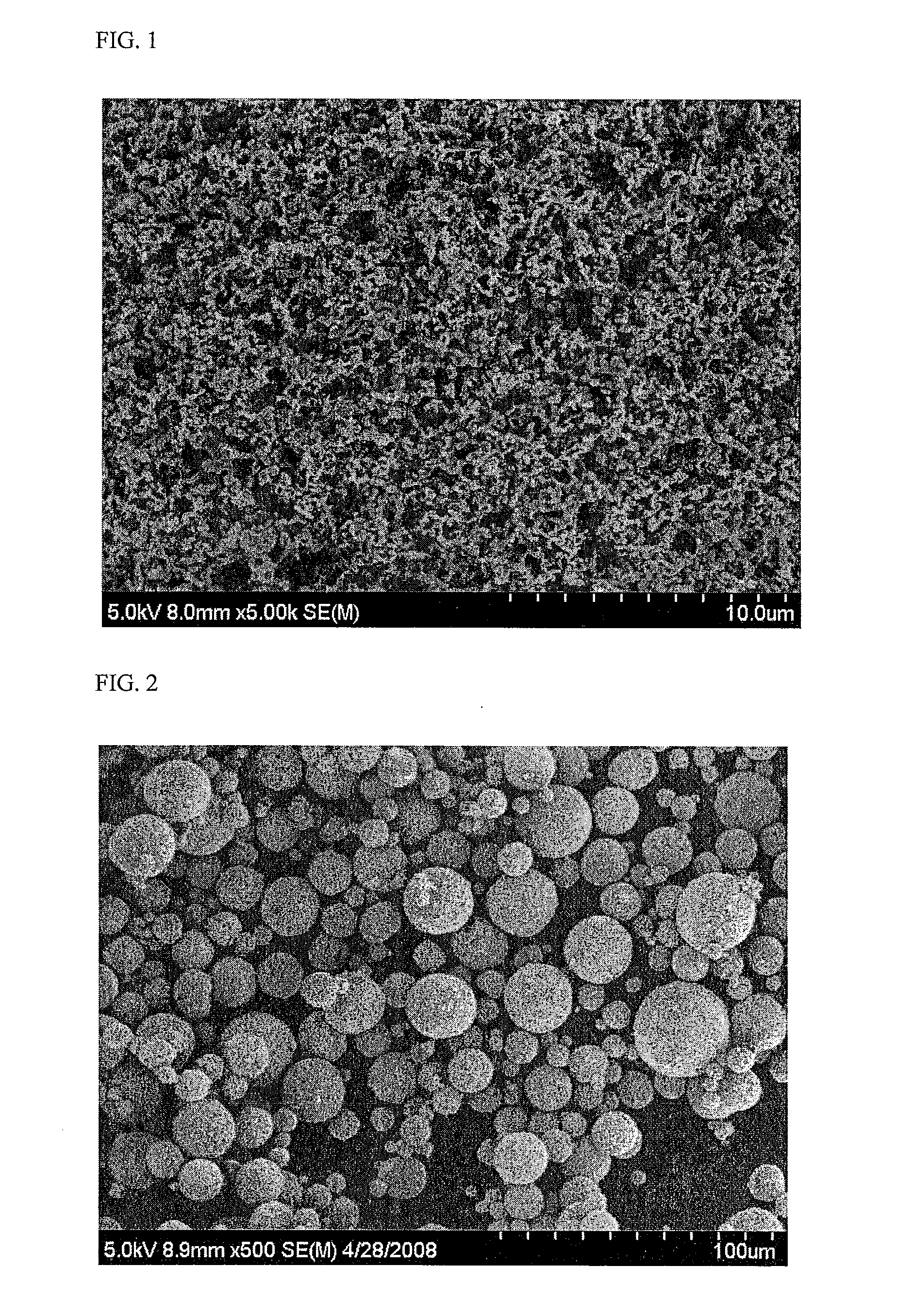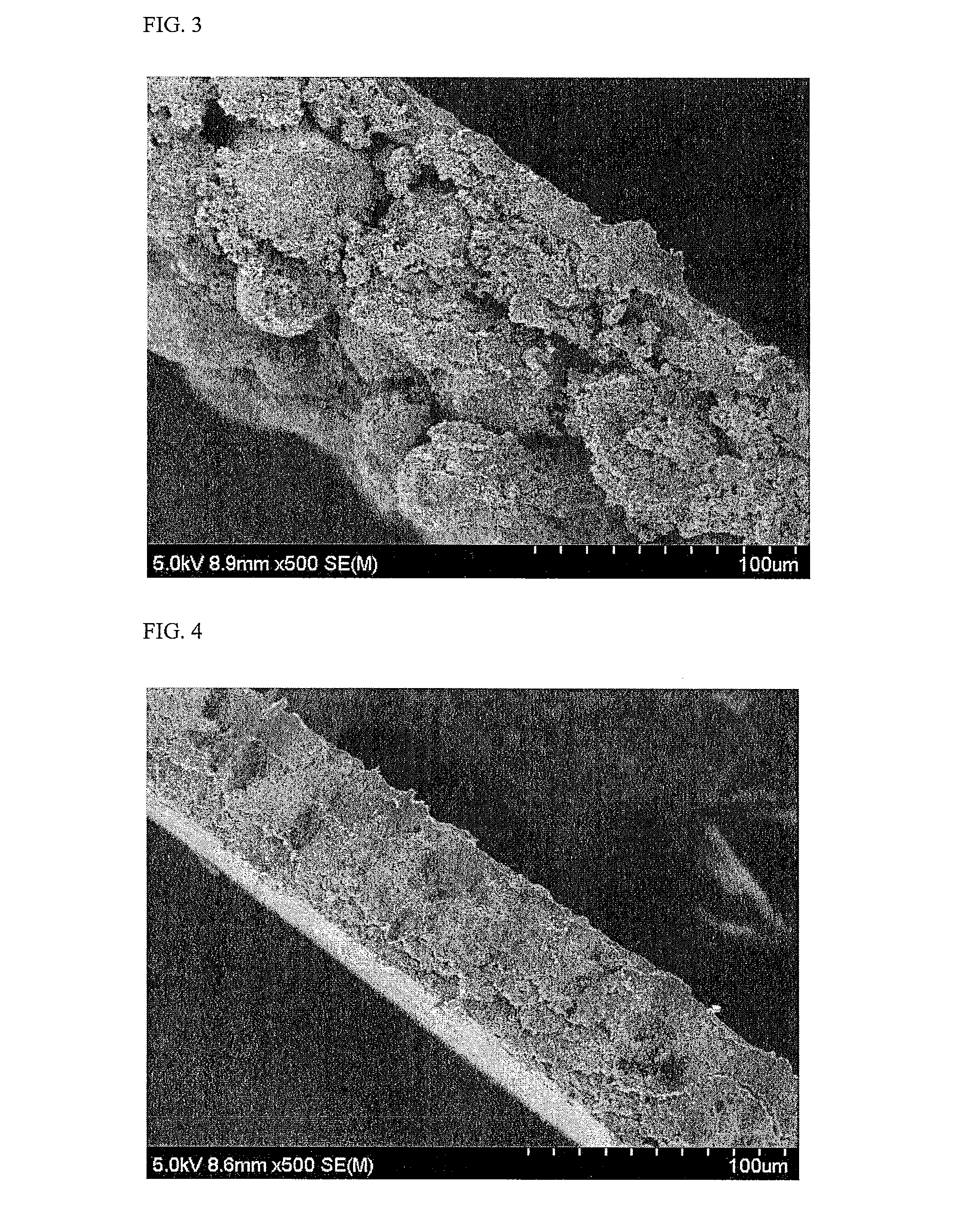Lithium iron phosphate having olivine structure and method for preparing the same
a technology of olivine and lithium iron phosphate, which is applied in the field of lithium iron phosphate having an olivine structure and a method for preparing the same, can solve the problems of low stability and high cost, the limitation of mass-use as a power source for electric automobiles, and the inability to achieve mass-production at a reasonable cost, etc., and achieves high density, high stability, and superior electrical conductivity.
- Summary
- Abstract
- Description
- Claims
- Application Information
AI Technical Summary
Benefits of technology
Problems solved by technology
Method used
Image
Examples
examples
[0088]Now, the present invention will be described in more detail with reference to the following examples. These examples are provided only for illustrating the present invention and should not be construed as limiting the scope and spirit of the present invention.
[0089]In the present examples, the content of water-soluble base present in a powder was measured according to the following method:
examples 1-5
[0090]A mixture consisting of 0.5 moles of iron sulfate (FeSO4.7H2O), 0.55 moles of phosphate, 1 mole of an aqueous lithium solution (LiOH.H2O) and NH3 present in an amount to adjust pH of the mixture to 6 was placed in an autoclave and purged with nitrogen. The mixture was elevated to a temperature of 200° C. at a rate of 1° C. / min, stirred at 100 rpm for 12 hours and cooled at a rate of 1° C. / min to ambient temperature.
[0091]As a result, lithium metal composite oxide (LiFePO4) primary particles were prepared (See FIG. 1). The primary particles and sucrose were added to water with stirring to prepare a mixture. The mixture was aggregated and dried by a rotation spray drying method to prepare secondary particles (See FIG. 2). The secondary particles were dried at 120° C. by a spray drier and calcinated at 700° C. under nitrogen atmosphere for 10 hours.
[0092]90% by weight of the secondary particles thus prepared, 5% by weight of Super-P as a conductive material and 5% by weight of PV...
experimental example 1
[0094]Physical properties including porosity, mean particle diameter, BET and density of the cathodes of Examples 1 to 5 were measured. The results thus obtained are shown in Tables 1 to 4 below and FIGS. 5 and 6.
TABLE 1Total porosityPorosity of secondaryPorosity between(%)particles (%)secondary particles (%)Ex. 161.028.533.0Ex. 259.126.232.9Ex. 355.022.932.1Ex. 464.928.536.5Ex. 567.022.144.9
TABLE 2Mean particleMean particle diameterMean particlediameterbetween secondarydiameterof secondary particlesparticles(Volume) (nm)(Volume) (nm)(Volume) (nm)Ex. 18947.6522.517533.2Ex. 22686.6384.24855.4Ex. 33030.1379.34826.6Ex. 44228.8409.314082.7Ex. 52186.1432.85681.0
TABLE 3BET betweenTotal BETBET of secondarysecondary particles(m2 / g)particles (m2 / g)(m2 / g)Ex. 16.9976.7780.221Ex. 27.7037.0230.679Ex. 37.4756.7370.736Ex. 48.6848.2140.468Ex. 58.9308.9300.349
TABLE 4Apparent (skeletal)Apparent (skeletal)Apparent (skeletal)DensityDensityDensity (g / mL)(g / mL) - Micro(g / mL) - MacroEx. 10.930.510.53Ex. 2...
PUM
 Login to View More
Login to View More Abstract
Description
Claims
Application Information
 Login to View More
Login to View More - R&D
- Intellectual Property
- Life Sciences
- Materials
- Tech Scout
- Unparalleled Data Quality
- Higher Quality Content
- 60% Fewer Hallucinations
Browse by: Latest US Patents, China's latest patents, Technical Efficacy Thesaurus, Application Domain, Technology Topic, Popular Technical Reports.
© 2025 PatSnap. All rights reserved.Legal|Privacy policy|Modern Slavery Act Transparency Statement|Sitemap|About US| Contact US: help@patsnap.com



